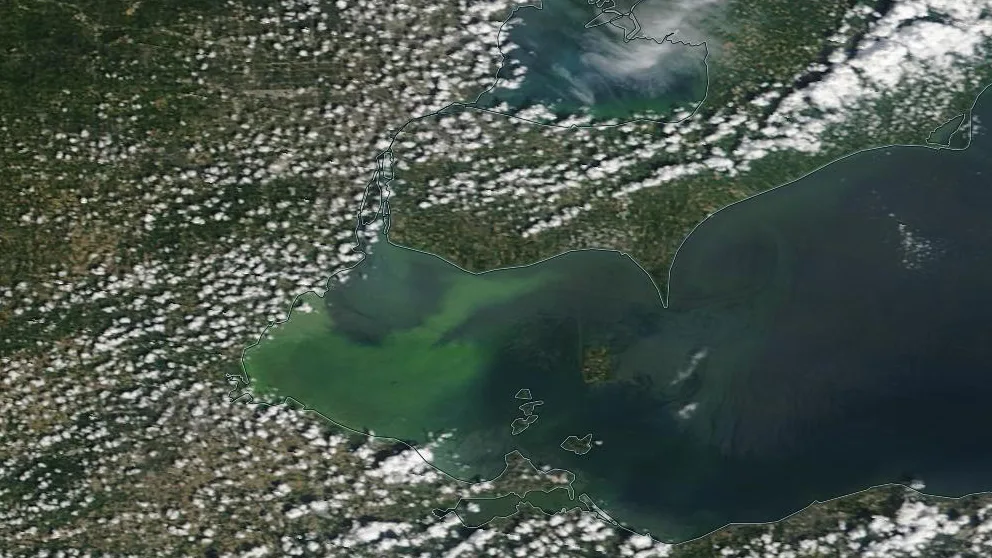
Lake Erie's toxic algal bloom spreads, prompting warnings
Harmful algal blooms are a growing concern for western Lake Erie
Forecasters are expecting a 'significant' algal bloom in western Lake Erie this summer.
Update (August 6, 2019): Lake Erie's harmful algal bloom is here and spreading.
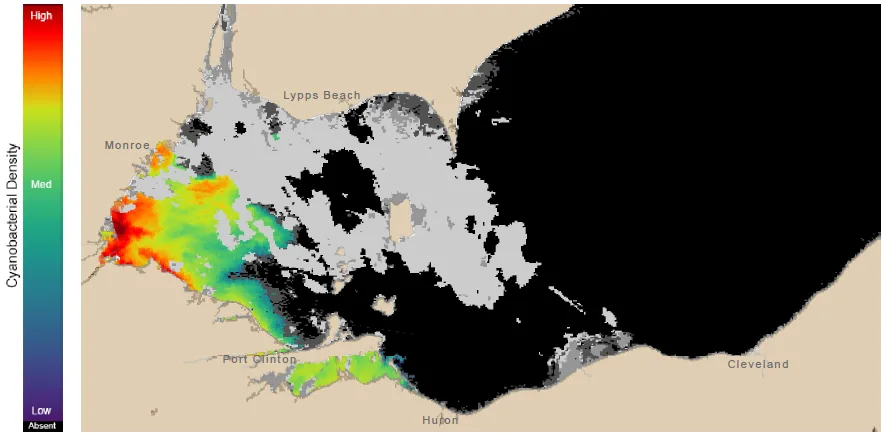
Map showing the extent and severity of the toxic algal bloom in Lake Erie's west end, derived from Sentinel satellite images taken on August 3, 2019. Credit: NOAA/GLERL
According to NOAA's Great Lakes Environmental Research Laboratory (GLERL), as of August 3, the bloom extended from Maumee Bay north along the Michigan coast to Brest Bay, east along the Ohio coast to the Portage River, and up to 11 kilometres east of West Sister Island, as shown in the map, above.
Based on their analysis of winds over this past weekend (August 3-4), the areas on the above map coloured in dark red and orange correspond to regions that favoured scum formation.
"Measured toxin concentrations remain above the recreational threshold where the bloom is most dense (appearing green from a boat)," the latest GLERL bulletin read, prompting a warning to "keep pets and yourself out of the water in areas where scum is forming."
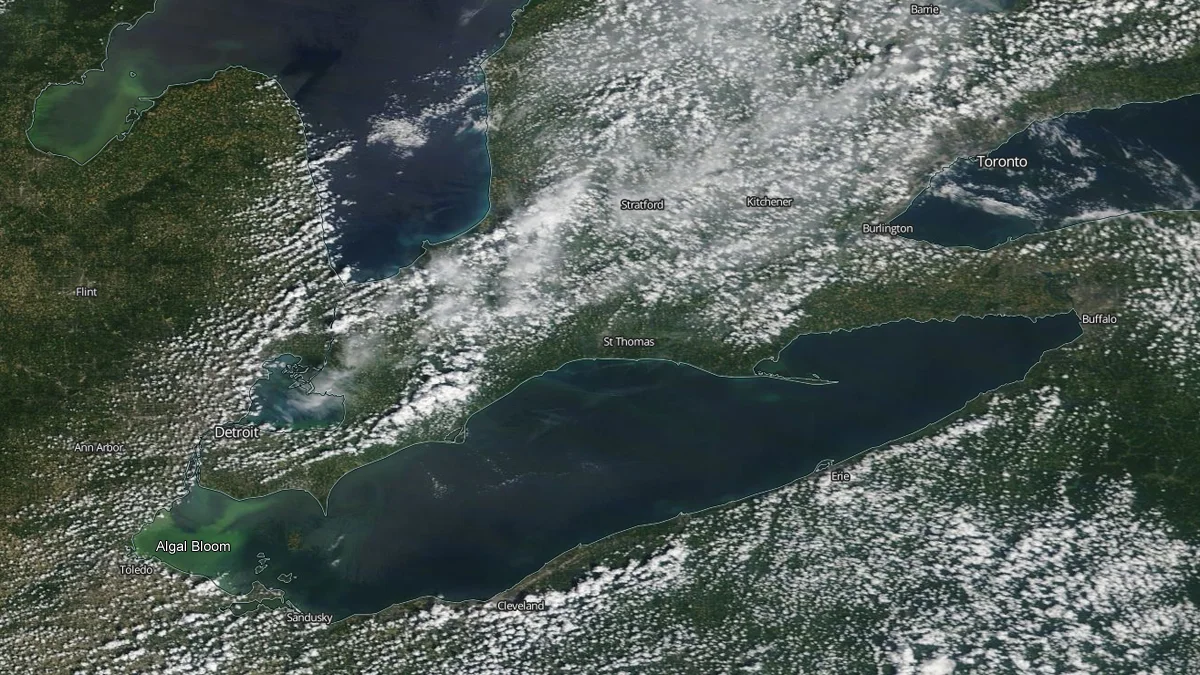
This view of Lake Erie, from NASA's polar-orbiting Terra satellite, shows the algal bloom on August 5, 2019. Credit: NASA/Scott Sutherland
Great Lakes Scientist Eddie Verhamme posted this video of the bloom from near the University of Toledo's Lake Erie Center, in Oregon, Ohio.
THE FORECAST
According to NOAA: "This year’s bloom is expected to measure 7.5 on the severity index, but could range between 6 and 9. An index above 5 indicates blooms having greater impact. The severity index is based on bloom's biomass – the amount of algae – over a sustained period. The largest blooms occurred in 2011, with a severity index of 10, and 2015, at 10.5. Last year’s bloom had a severity index of 3.6, while 2017's was 8.0."
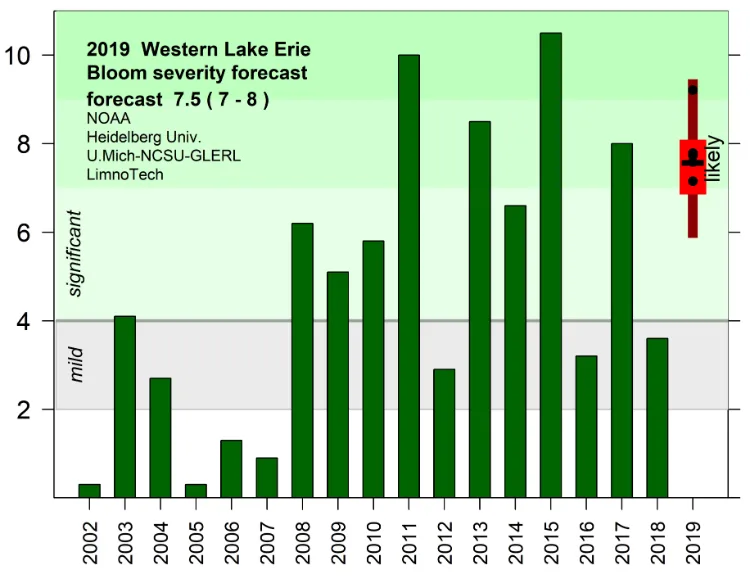
NOAA's harmful algal bloom (HAB) forecast for 2019, compared to blooms from previous years. 2015 currently has the worst harmful algal bloom on record. Credit: NOAA
Higher-than-average rainfall over the region has meant relatively cool lake temperatures for western Lake Erie, says NOAA. Once the water temperatures climb later in July, reaching between 18-20°C, however, that's when the bloom is expected to start.
"Calm winds in July, especially in western Lake Erie, tend to allow the algal toxins to concentrate, making blooms more harmful," NOAA said in their forecast. "The bloom typically peaks in the western part of the lake in September. Most of the rest of the lake will not be affected."
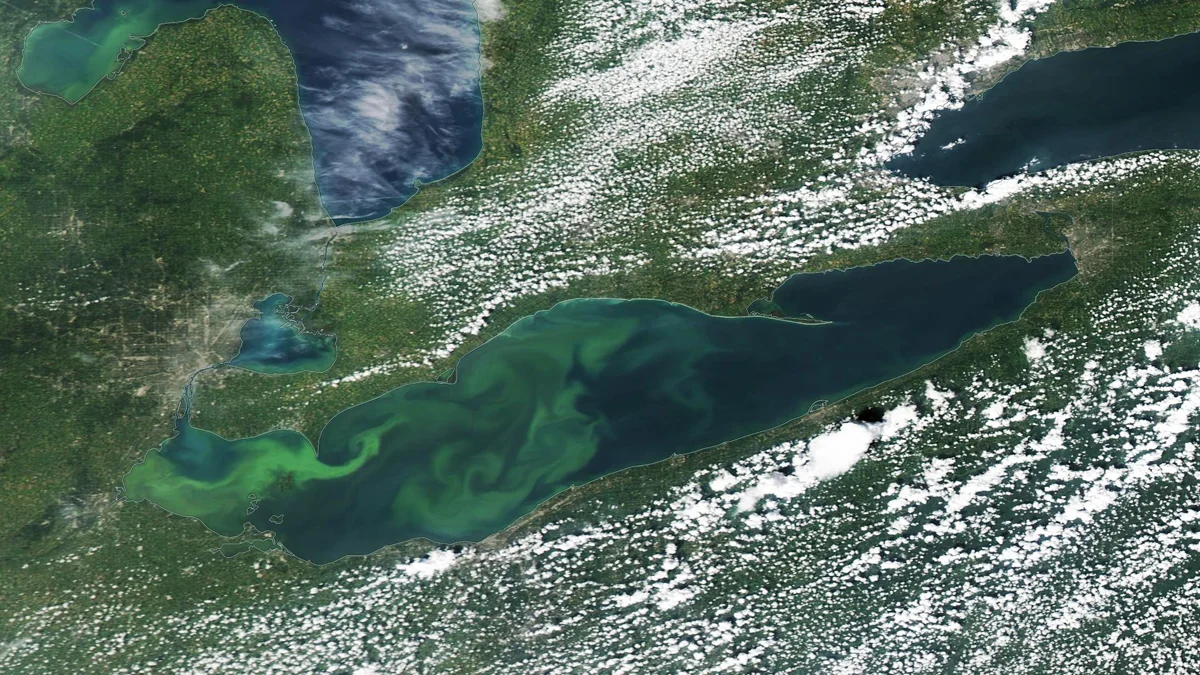
This harmful algal bloom (HAB) from September 6, 2015 was the worst on record. Credit: NASA/Aqua MODIS
This vibrant green colour comes from a population explosion of algae - known as cyanobacteria - which is touched off by a combination of warm waters, sunshine and an abundant supply of nutrients thanks to phosphorus from commercial agricultural runoff, sewage and industry that gets washed into the lake water.
Cyanobacteria is naturally occurring in the environment, and uses photosynthesis to consume carbon dioxide and phosphorus in the water, and produces oxygen as a waste product. It's thought that these bacteria were the first to introduce oxygen into ancient Earth's atmosphere.
In past, populations were kept more under control by the natural processes in the lake. In more recent years - mainly in the 1950s and 1960s and again roughly in the past decade - higher concentrations of phosphorus entering the lake water have caused more of these population explosions.
Normally fairly harmless in lower concentrations, when these harmful algal blooms (HABs) occur, cyanobacteria pose a risk to aquatic life and human health.
As a bloom spreads throughout the surface layer of lake water, the cyanobacteria release toxins known as microcystins into the environment. Simply swimming in water with high concentrations of microcystins can cause symptoms such as stomach cramps, vomiting, diarrhea, fever, headache, muscle and joint pain, and weakness, as well as skin and eye irritation, sore throat and allergic reactions.
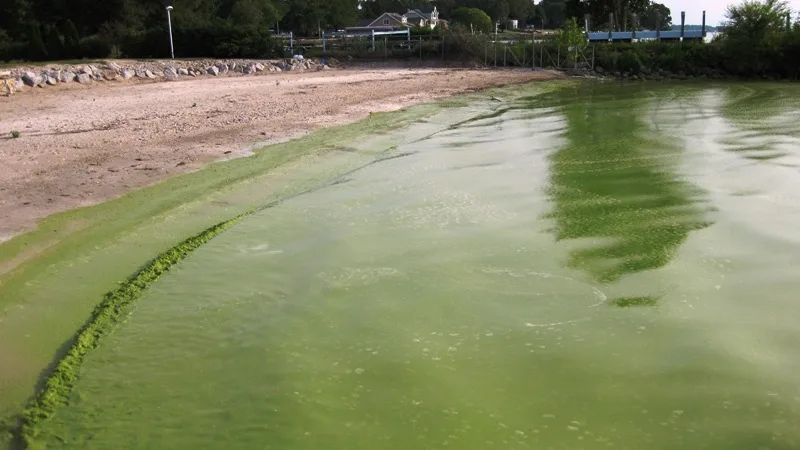
This harmful algal bloom developed along the shore of Catawaba Island, Ohio, on lake Erie, in 2009. Credit: NASA
If these toxins enter the drinking water supply in sufficient amounts, such as during extreme outbreaks, symptoms can develop that cause liver and kidney damage, or life-threatening bouts of gastroenteritis, aka 'stomach flu' (especially for children and the elderly).
Coupled with these toxins, further problems occur due to the life cycle of the cyanobacteria.
Since individual bacteria only live for a very short time, even as the bloom spreads, millions of them die in the process. The death and decay of the bacteria strips oxygen from the water (hypoxia), and the dead organisms form a layer of scum on the surface. Thus, the living bacteria in the top layer of the water absorb sunlight for photosynthesis while at the same time more sunlight is blocked from reaching deeper waters by this scum on the surface. This combination kills off important plant and microorganism species that live deeper down in the water, and as well as any organisms that depend upon them, worsening the hypoxia in the lake water.
Some regions of the lake can become dead zones, with little to no oxygen in the water, resulting in massive fish die-offs (known as 'fish kills') that can make the situation worse.
Source: NOAA | With files from The Weather Network











